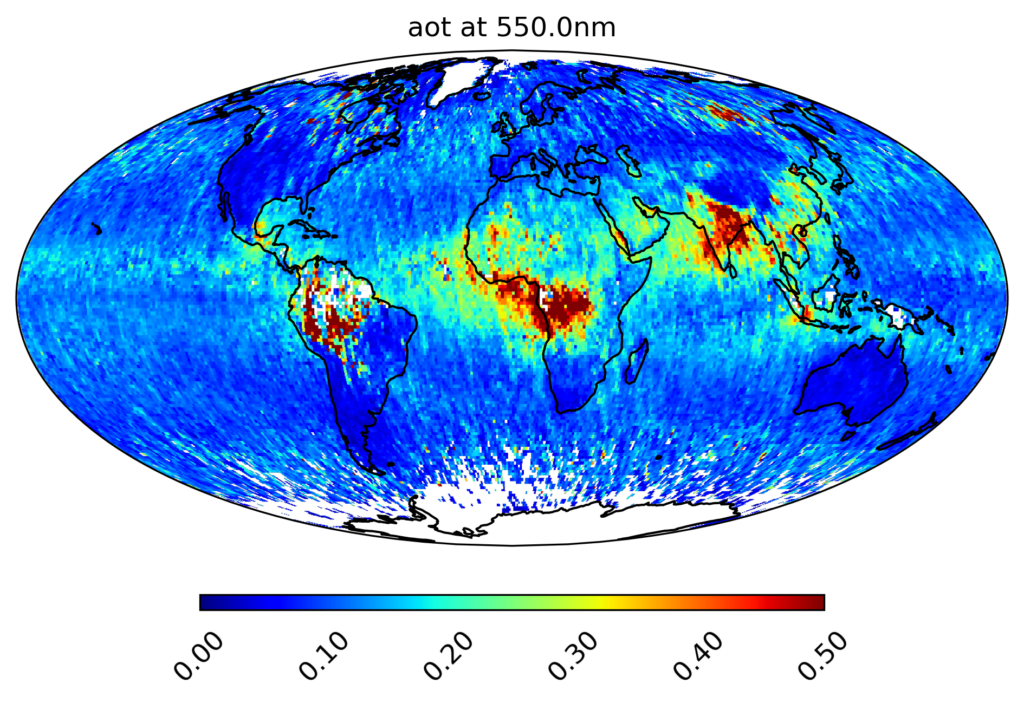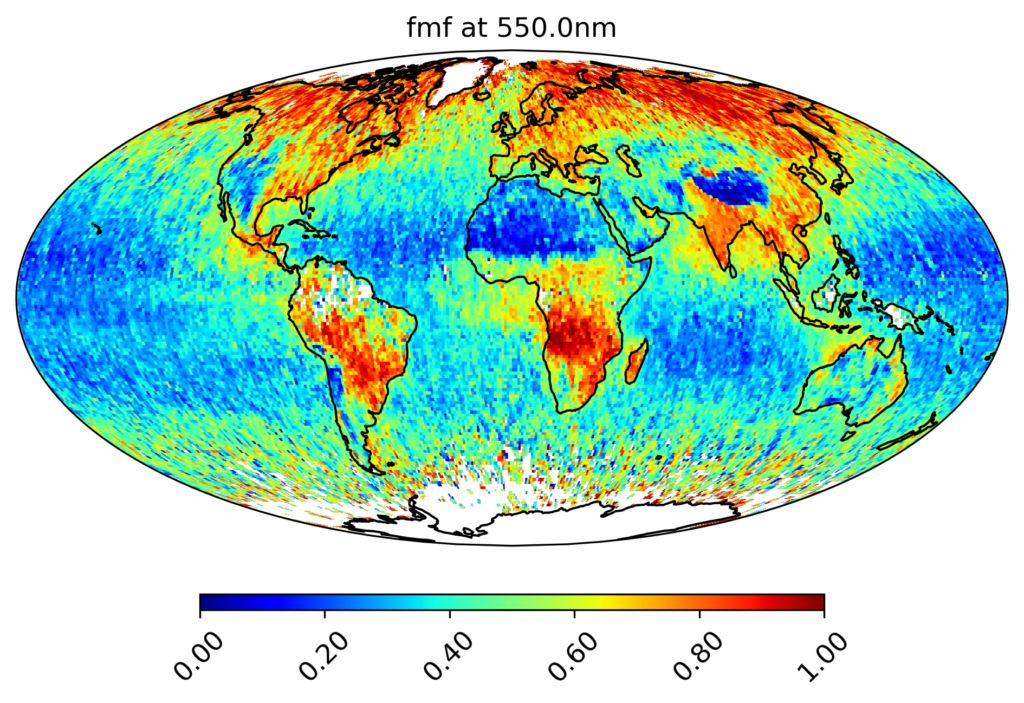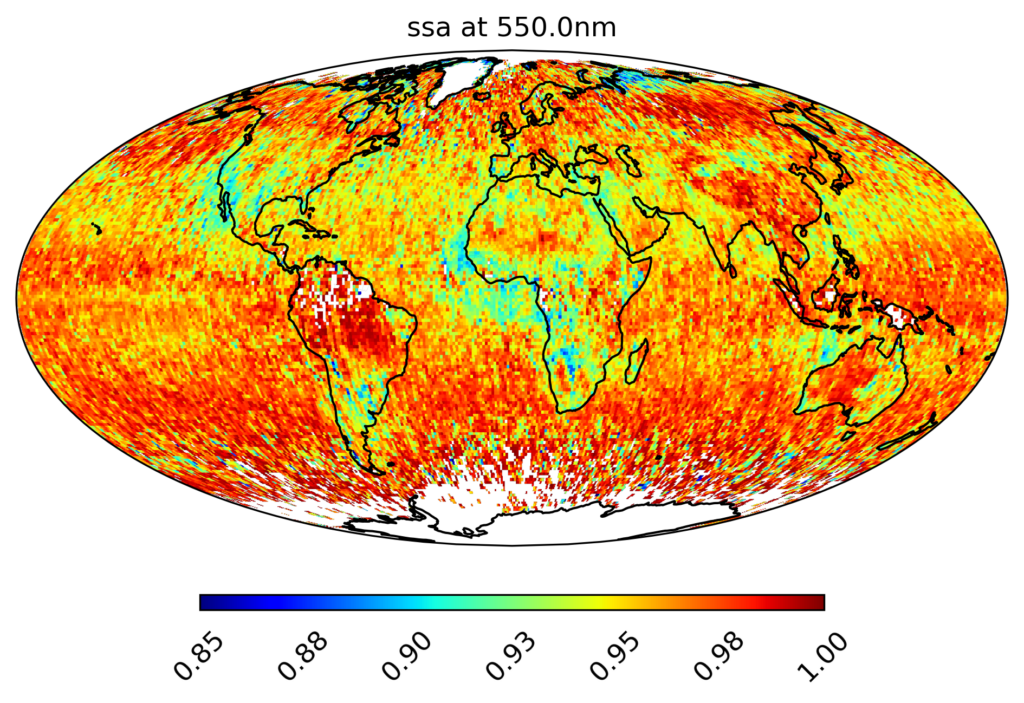NASA lanceerde op 8 februari 2024 klimaatsatelliet PACE met aan boord het Nederlandse fijnstofinstrument SPEXone. Een jaar lang observeren levert nu een driedelige wereldkaart op van aerosolen. Die toont de verspreiding van fijne en grove aerosolen en van deeltjes die zonlicht reflecteren of juist absorberen. Dat laatste heeft respectievelijk een afkoelend en opwarmend effect op het klimaat. SPEXone is gebouwd door SRON en Airbus Netherlands, met ondersteuning van TNO.
Aerosolen
Aerosolen zijn kleine deeltjes als roet, as en woestijnstof in de atmosfeer, ook wel fijnstof genoemd. Ze hebben een netto afkoelend effect op het klimaat, maar in welke mate is onduidelijk. De marge loopt van 0,2 tot zelfs 0,9 graden dempende invloed op de mondiale opwarming. Fijnstof beïnvloedt het klimaat zowel direct via reflectie en absorptie van zonlicht, als indirect door als startpunt te fungeren voor wolkvorming. Het gebrek aan laaghangende bewolking is bijvoorbeeld een van de oorzaken van het recordwarme jaar 2024.

Wereldkaart
Na een jaar in de ruimte heeft het team nu drie wereldkaarten van aerosol geproduceerd. De eerste toont de verdeling van aerosolen over de aardatmosfeer. De tweede kaart toont de hoeveelheid fijne aerosolen ten opzichte van het totale aantal. Hier zien we dat fijne deeltjes vooral voorkomen boven gebieden met veel verkeer en industrie zoals India en regio’s met veel branden zoals midden-Afrika en Siberië. Woestijnstof en zeezout zijn juist grover fijnstof, wat overeenkomt met de blauwe pixels op de locatie van woestijnen en oceanen. De derde kaart geeft de hoeveelheid reflecterende aerosolen—met afkoelend effect—ten opzichte van het totale aantal aerosolen op die plek. Dat geeft een totaalbeeld van het directe effect van fijnstof op het klimaat.

Klimaatmodellen
‘De volgende stap is dat we aan de knoppen gaan draaien van klimaatmodellen totdat die ditzelfde beeld gaan produceren,’ zegt Otto Hasekamp (SRON), leider van het SPEXone-team. ‘Dan weet je dat je de juiste eigenschappen van aerosolen in de modellen hebt zitten. En dan kennen we de directe dempende invloed die ze hebben op de opwarming van de aarde, de optelsom van reflectie en absorptie.’

Wolken
Wat dan nog overblijft is de indirecte invloed die aerosolen hebben op het klimaat, via wolken. Die ontstaan als waterdamp zich kan hechten aan deeltjes in de lucht en zo druppels vormen. Met meer aerosolen moet de waterdamp zich over meer kernen verdelen en krijg je dus kleinere druppels. Maar de mate waarin dit geldt is onbekend. Hasekamp: ‘Ook op dit vlak gaan we het komende jaar aan de slag met klimaatmodellen. De wereldkaart met fijne en grove aerosolen geeft ons daarvoor de data, omdat de grootte van een aerosoldeeltje bepaalt of het geschikt is om een wolkendruppel te vormen.’
Nederlandse uitvinding
Eppo Bruins, minister van Onderwijs, Cultuur en Wetenschap (OCW): ‘Ik ben onder de indruk van het onderzoek dat SRON met deze Nederlandse uitvinding doet. De atmosfeer is een complex systeem en het klimaat is van grote invloed op ons leven. We hebben nog onvoldoende kennis over de precieze werking van de atmosfeer en werking van klimaatverandering. Met dit onderzoek kunnen de klimaatmodellen sterk verbeterd worden, de kennis kan zo meteen benut worden.’


